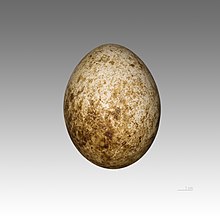Palm-nut Vulture
| Palm-nut Vulture | |
|---|---|
 | |
| Adult at Jurong Bird Park, Singapore | |
| Conservation status | |
| Scientific classification | |
| Kingdom: | Animalia |
| Phylum: | Chordata |
| Class: | Aves |
| Order: | Falconiformes (or Accipitriformes, q.v.) |
| Family: | Accipitridae |
| Genus: | Gypohierax Rüppell, 1836 |
| Species: | G. angolensis |
| Binomial name | |
| Gypohierax angolensis (Gmelin, 1788) | |
The Palm-nut Vulture (Gypohierax angolensis) or Vulturine Fish Eagle, is a very large bird of prey in the family Accipitridae which also includes many other diurnal raptors such as kites, buzzardsand harriers, vultures, and eagles. It is the only member of the genus Gypohierax. Unusual for Birds of Prey, it feeds mainly on the fruit of the oil-palm though it also feeds on crabs, molluscs, locusts, fish and has been known to occasionally attack domestic poultry.
This bird is an Old World vulture, and is only distantly related to the New World vultures, which are in a separate family, Cathartidae.
It breeds in forest and savannah across sub-Saharan Africa, usually near water, its range coinciding with that of the Oil Palm. It is quite approachable, like many African vultures, and can be seen near habitation, even on large hotel lawns in the tourist areas of countries like The Gambia.
Description
This is an unmistakable bird as an adult. At 1.2-1.5 kg (2.6-4 lbs), 60 cm (24 in) and 150 cm (59) across the wings, this is the smallest Old World vulture. Its plumage is all white except for black areas in its wings. It has a red patch around the eye. The immature, which takes 5 years to mature, is brown with a yellow eye patch. In flight this species resembles an eagle more than a typical vulture, and it can sustain flapping flight, so it does not depend on thermals.
Nesting
Birds may form loose colonies. A single egg is incubated in a bulky stick nest in a tree for about six weeks.



No comments:
Post a Comment